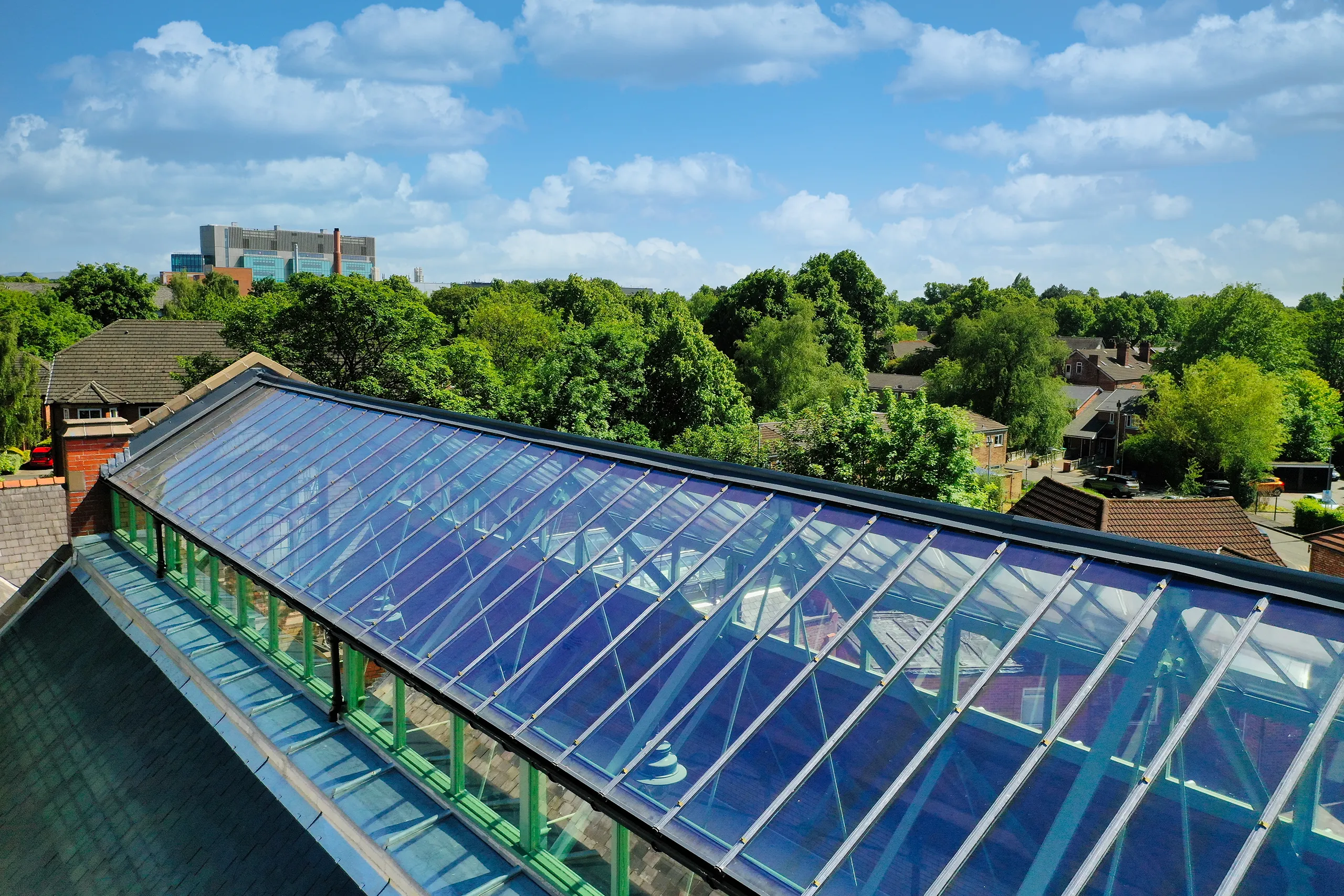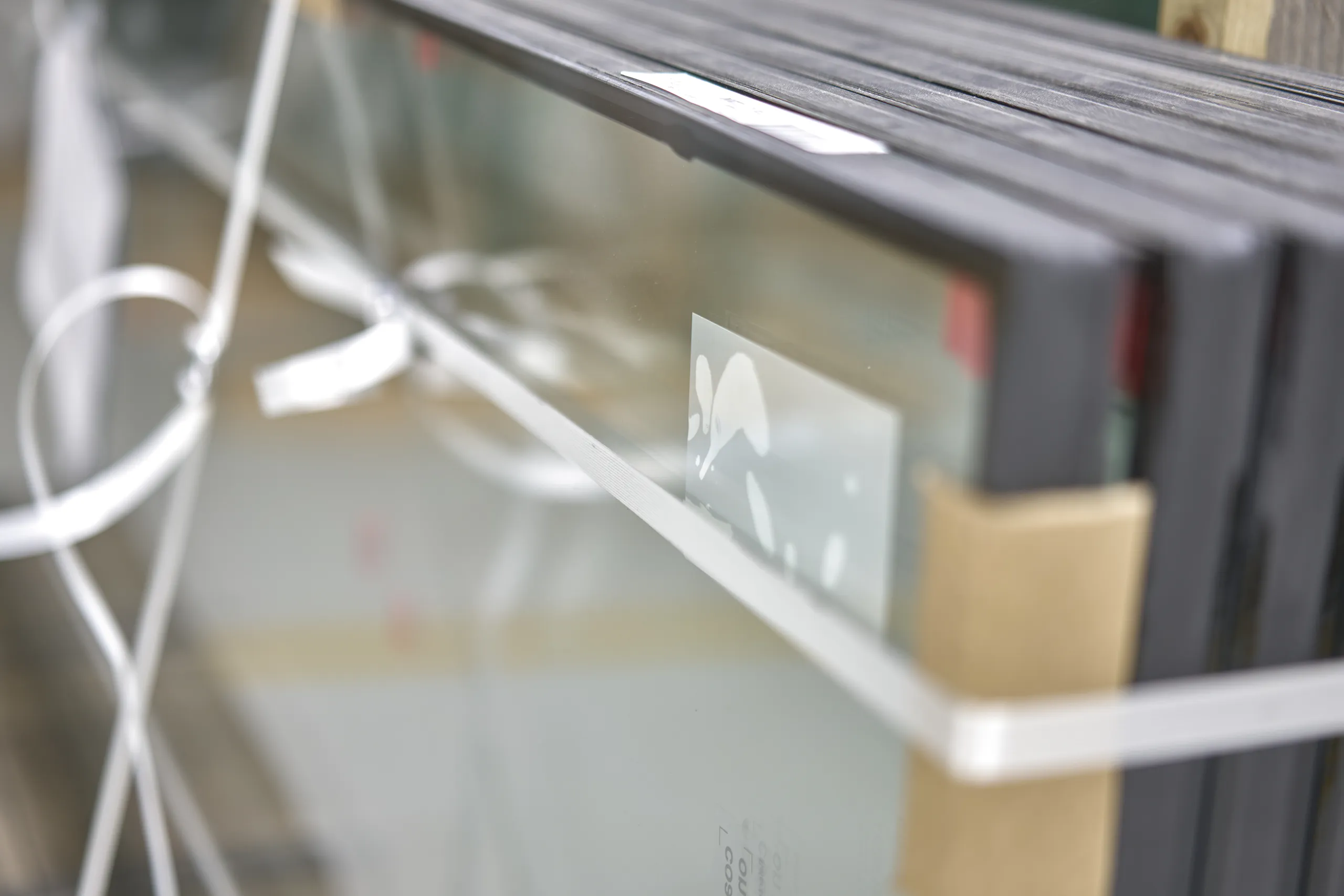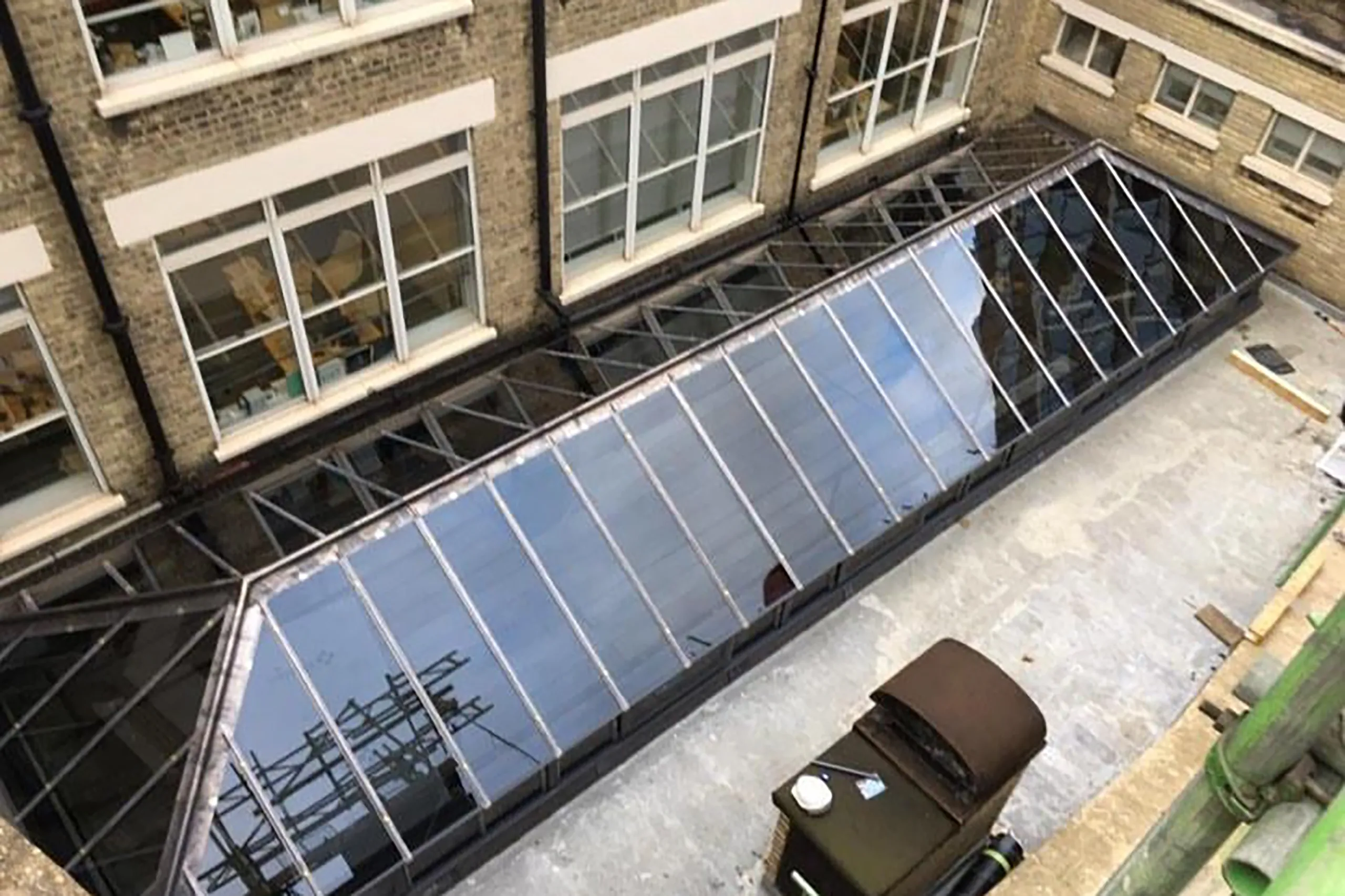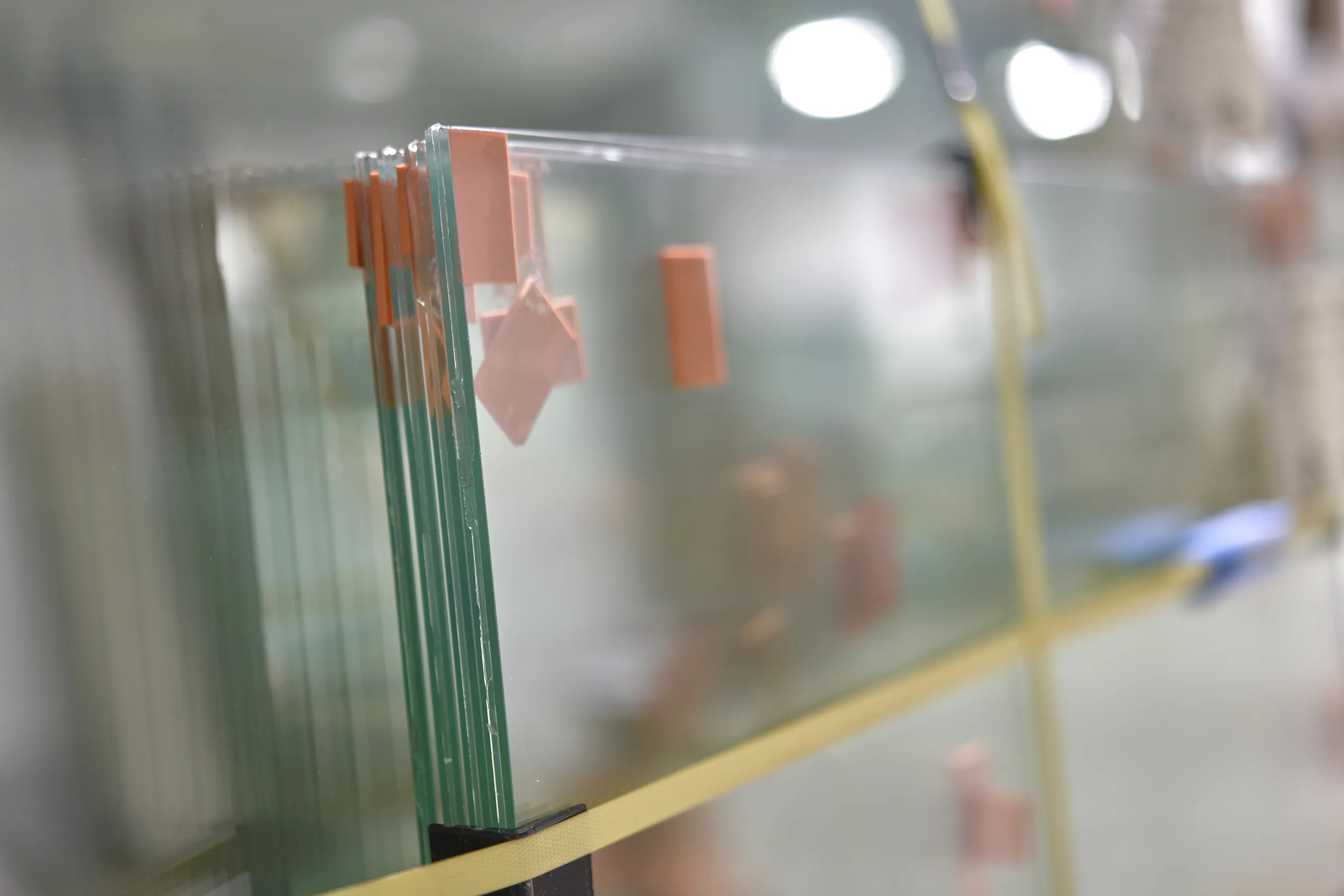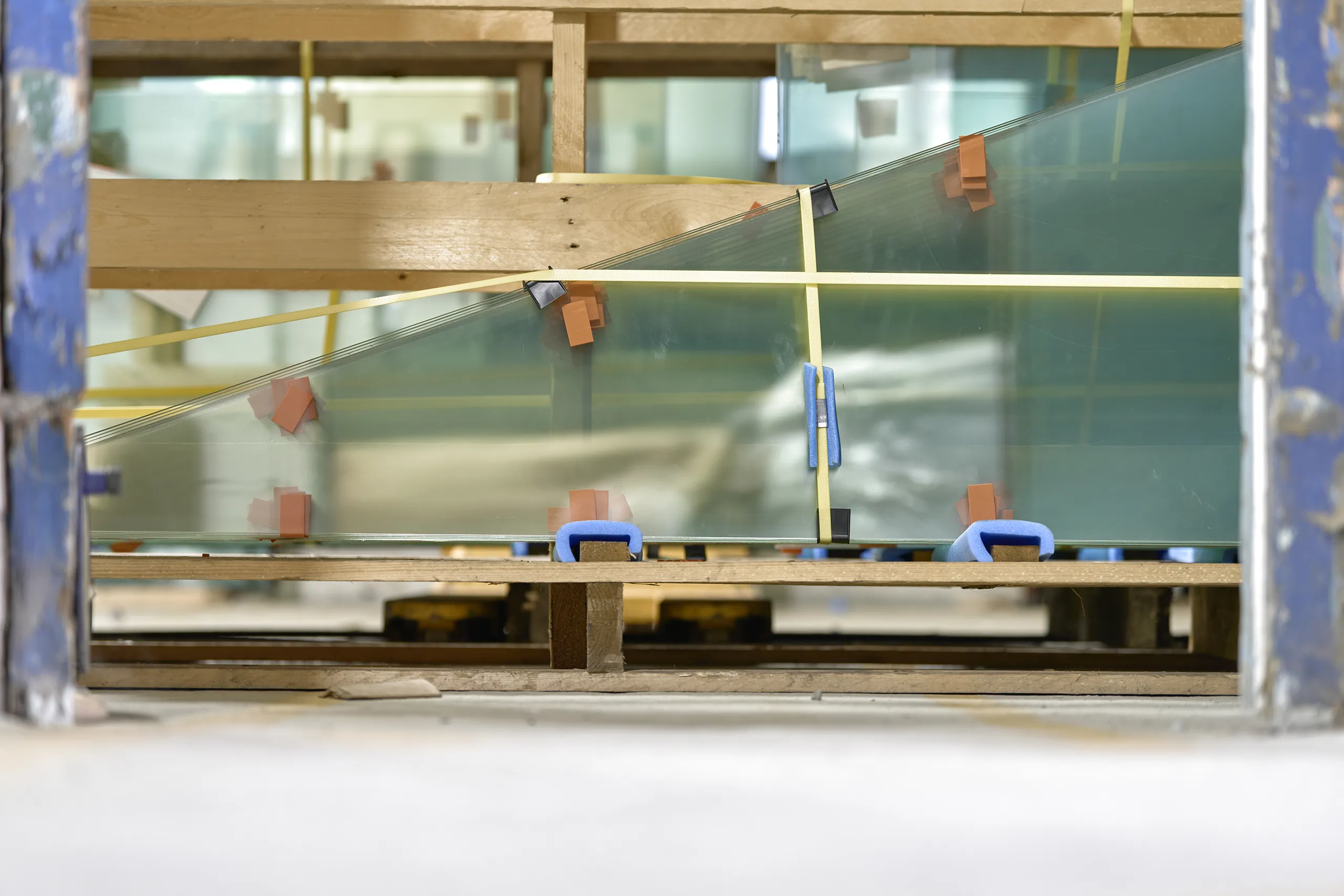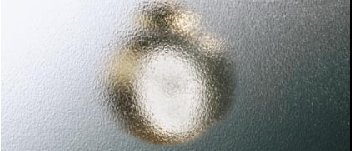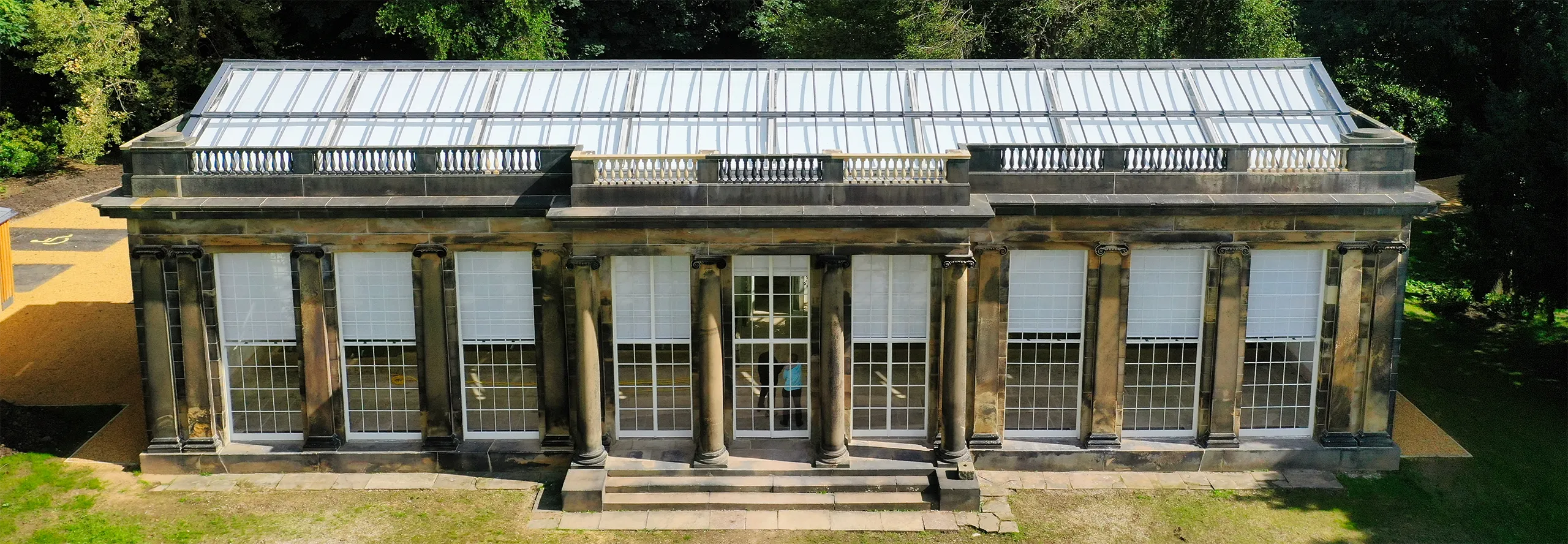The Common Types
All patent glazing systems must be installed with suitable safety glass. These are either toughened or laminated glasses or a combination of these for double and triple glazed systems.
Double and triple glazed units are usually supplied in fully toughened formats or with toughened glass to the outer panes and laminated glass to the inner panes to prevent glass from falling to the floor level in the event of breakages.
